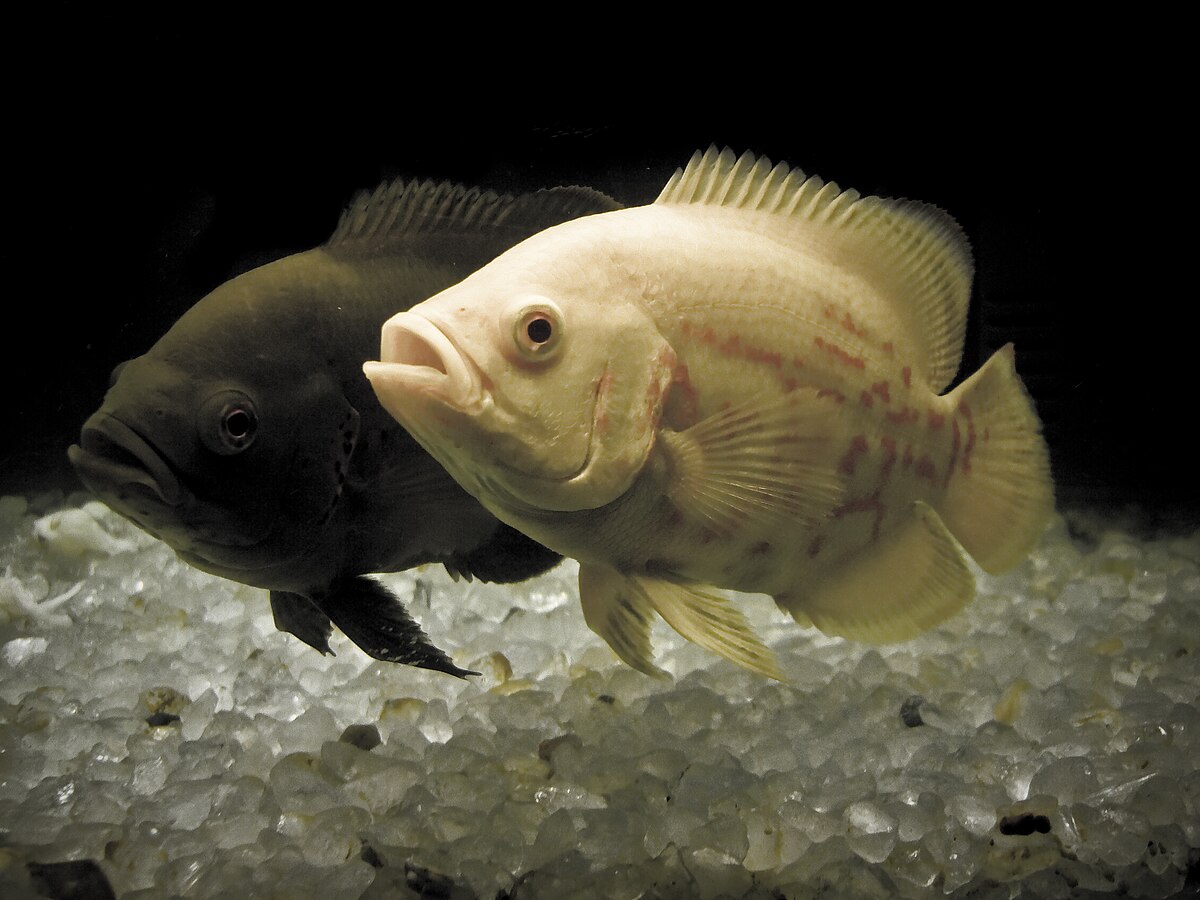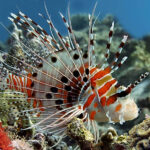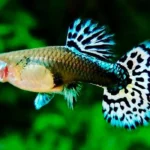Meet the Mastermind of the Aquarium
Oscar fish, also known as the “river dog” of fishkeeping, combine canine loyalty and awareness with hunter instincts. They’re territorial, inquisitive, and captivating in ways that make them stand out from the thousands of freshwater species known to aquarists.
So what makes Oscar fish such intelligent predators? And why is it that aquarists of all levels, from novices to experts, fall in love with their zany behaviour? Find out what makes Oscars such fascinating additions to the home aquarium by delving deeply into their world.

Origins in the Wild
The Oscar fish are indigenous to the sluggish, warm rivers of South America, especially the Amazon basin that runs from Brazil, Colombia, Peru, and the surrounding areas. In the tannin-laden waters with submerged logs and decaying leaves, Oscars developed into top predators. Their surroundings influenced their actions. Vision is not always trustworthy in these deep, frequently murky waters.
They now possess the skill of ambush. Upon the approach of a smaller fish or insect, Oscar in the wild is capable of attacking with incredible speed after waiting for up to minutes. One of many reasons Oscars are a predator is the way in which they hunt.
Flooded forests
Swamps
Shallow river edges
Backwaters with low current
Physical Traits that Impress
Upon first glance, the Oscar fish is a spectacle. Their body is up to 12–14 inches (30–35 cm) long, with stocky bodies and expressive faces that indicate a higher level of intelligence. They have rounded fins, large tails, and an elegant method of swimming that’s authoritative as much as it is elegant. Their most outstanding feature, though, is their color.
Tiger Oscar—The most common, with black bodies and bright orange-red patterns.
Albino Oscar—Pale white or pinkish bodies with red eyes.
Red Oscar—Deep red hues over a black base.
Lemon Oscars—Bright yellow colouration, giving them a striking appearance.
Veil Tail Oscar—Long, flowing fins that enhance their majestic presence.
Although looks are a part of the Oscars’ charm, their temperament is really what makes them stand out.
Intelligence in a Fish Tank
Ask the owner of an Oscar, and they will regale you with tales of tricks and antics you’d only associate with a cat or dog, let alone a fish. Oscars are familiar with their owners. They’ll trail your finger along the glass, beg for food, and even pout when you move their tank.
They are intelligent—not the kind to crumple numbers, but in how able they are to learn, adapt, and react to stimuli. Oscar fish can:
Learn feeding schedules. Many owners report Oscar waiting by the feeding area at specific times.
Differentiate between people. They often behave differently when their owner approaches compared to a stranger.
Respond to training. With patience, Oscars can be trained to eat from your hand, swim through hoops, or even perform simple tricks.
Display problem-solving skills. They’ve been observed moving objects or figuring out how to access hidden food.
Their intelligence has also resulted in playful antics. Owners of Oscars describe their fish flipping decorations, restructuring substrate, or even pretending to be sick in order to receive attention—activities hardly ever observed in other fish.

Predatory Instincts in Captivity
While Oscars are sweet, they remain instinctual hunters. In a tank, that doesn’t cease. It is expressed in their willingness to chase smaller fish, grab moving items, and sometimes, fight with tankmates for territory.
That’s why tank compatibility is such an issue. Oscars don’t normally get along with small or docile fish. Here’s a roster of tankmates that oftentimes fail:
Guppies, tetras, and tiny barbs—too small and probably eaten.
Angelfish or gouramis—too mild-tempered and bullied easily.
Shrimp or snails—yummy snacks.
But then there are suitable tankmates—other strong and similarly sized fish, like
Silver dollars
Plecos
Large catfish (such as pictus or synodontis)
Other large cichlids (if introduced with care and provided sufficient space)
Even with the same species, Oscars require room and uncluttered territories. The minimum tank size for an individual adult Oscar is 75 gallons, but 100+ gallons is preferable for pairs or societies.
Setting Up an Oscar-Friendly Aquarium
Oscars require more than elbow room—they require an environment that replicates their natural setting and serves their psychological requirements.
Tank Size and Layout
Minimum capacity: 75 gallons for a single Oscar; 100–125 gallons for a pair or more.
Substrate: Level sand or rounded gravel. Oscars tend to dig and reorganize the substrate.
Decorations: Steer clear of breakable items. Oscars enjoy relocating objects. Driftwood, rocks, and strong plants (although they may pull these out) are suitable.
Lighting: Slightly moderate lighting replicates their natural setting. High light levels can stress them.
Water Parameters
pH: 6.0–8.0 (slightly acidic to neutral is optimal)
Ammonia/Nitrites: 0 ppm (sensitive to poor water quality)
Nitrates: <40 ppm
Employ a powerful filtration system. Oscars are sloppy eaters and prolific waste producers. Canister filters or double filtration systems are advised.

Feeding the Predator
In the wild, Oscar fish feed on small fish, insects, crustaceans, and plant debris. In order to maintain their health and color, their diet in the aquarium should reflect this variety.
Staple Diet
Pellets High-quality cichlid pellets should form the core of their diet.
Avoid overfeeding and steer clear of:
Goldfish or feeder fish from pet stores (due to parasites and poor nutrition).
Fatty meats like beef heart lead to long-term health issues.
Human food scraps (unbalanced and potentially harmful).
Common Health Concerns
Hole-in-the-Head Disease (HITH)
Symptoms: Pits or holes in the head region.
Causes: poor water quality, lack of variety in diet, or Hexamita parasites.
Treatment: Improve water quality, use medicated food, or use antiparasitic treatments.
Ich (White Spot Disease)
Symptoms: white cysts on the body and fins, scratching behavior.
Causes: stress, temperature fluctuations.
Treatment: Raise temperature gradually and use ich-specific medications.
Bloat and Constipation
Symptoms: Swollen belly, floating problems.
Causes: Poor diet, overfeeding.
Treatment: Fasting, feeding blanched peas.
Clean water, a varied diet, and regular observation can prevent most issues.

Conclusion
Oscar fish are more than just aquarium pets—they’re intelligent, emotional, and commanding predators of the freshwater world. A unique experience is provided by their size, color, behavior, and interaction, which few fish can match.
They’re not for everyone, but for those who choose to raise them, Oscars provide a dynamic relationship, a constant source of fascination, and a glimpse into the wild instincts and intelligence that fish are so often underestimated for.
The Oscar fish might just be the king of your freshwater kingdom if you’re ready for a pet that watches you as much as you watch it.
It takes a lot of time and effort to care for Oscar fish, but the rewards are unparalleled for those who do so. Few freshwater species offer such interaction, personality, and beauty in one finned package. They watch you, learn from you, and demand your attention. In return, they entertain, fascinate, and occasionally make you laugh.
They may be predators, but they’re also partners in your aquatic journey.
Look no further than the Oscar if you are prepared for a fish that will challenge you, entertain you, and captivate you. They not only swim but also rule.
FAQs
How big do Oscar fish get?
Oscar fish typically reach a length of 10 to 12 inches when kept in captivity, though with proper care, some can reach 14 inches. They can get even bigger in the wild, sometimes reaching 18 inches in length.
Can Oscar fish recognize their owners?
Yes! Oscars are among the most intelligent freshwater fish and can recognize their owners. They may greet you at the glass, follow your movements, or even beg for food. Many aquarists describe them as “wet pets” because of their interactive behavior.
What size tank do I need for an Oscar fish?
The minimum recommended tank size for a single Oscar is 55 gallons, but 75 gallons or more is ideal. If you plan to keep a pair or add compatible tankmates, a tank of 100–125 gallons is recommended.
Are Oscar fish aggressive?
Yes, Oscars can be aggressive, especially during feeding times or breeding season. They are territorial and may attack smaller or more passive fish. However, with the appropriate tank size, decor arrangement, and tankmates, their aggression is manageable.










